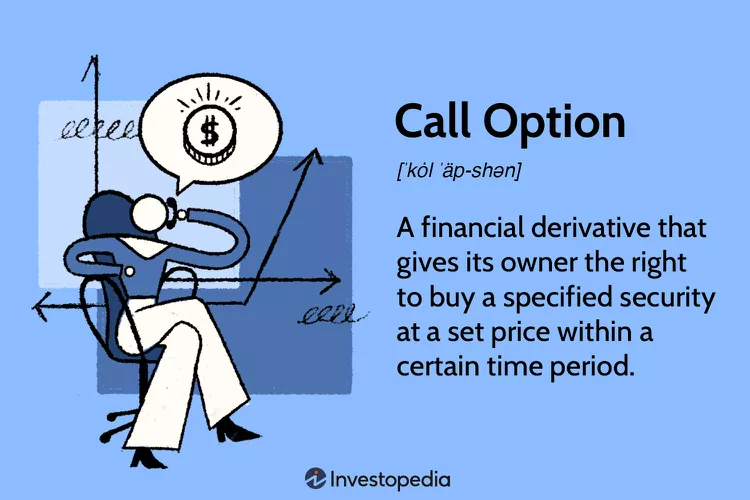Welcome to the exciting world of options trading! Whether you’re new to investing or exploring ways to generate a side hustle income, understanding options can open the door to endless possibilities. In this article, we’ll break down the basics of options trading, focusing on calls, puts, and the essential knowledge you need to get started.
What Are Options?
Options are financial instruments that give you the right, but not the obligation, to buy or sell an asset (such as a stock) at a specific price within a specified timeframe. Think of them as contracts that allow you to speculate on price movements or hedge your portfolio against potential risks.
There are two main types of options: calls and puts.
What Is a Call Option?
A call option gives you the right to buy an asset at a predetermined price (known as the strike price) before the option’s expiration date. Traders use call options when they believe the price of the underlying asset will go up. For example:
- Let’s say you buy a call option for Stock A with a strike price of $50, and the current stock price is $45. If Stock A’s price rises above $50 (say, to $60), you can exercise the call option to buy the stock at $50 and potentially sell it at the market price of $60, profiting from the price increase.
What Is a Put Option?
A put option gives you the right to sell an asset at a predetermined strike price before the option expires. Traders use put options when they believe the price of the predetermined asset will go down. For example:
- Imagine you own Stock B, which is currently trading at $40. You purchase a put option with a strike price of $35. If Stock B’s price falls to $30, you can sell it at the $35 strike price, protecting yourself from further losses.
Why Learn Options Trading?
Options trading is not just for experienced traders; it can also be a valuable tool for anyone looking to supplement their income. Here are some key benefits of trading options:
- Flexibility: Options can be used for speculation, hedging, or income generation.
- Leverage: You can control a large amount of stock for a fraction of the price, which means you can amplify your returns (but also your risks).
- Risk Management: Options allow you to hedge your investments and protect your portfolio against potential losses.
For many, options trading becomes a rewarding side hustle that helps them grow their wealth over time.
How to Get Started
If you’re new to options trading, start by learning the terminology and concepts. Here’s a step-by-step guide to help you get going:
- Understand the Basics: Learn about calls, puts, strike prices, premiums, and expiration dates.
- Open a Brokerage Account: Make sure your broker offers options trading and get approved for the appropriate trading level.
- Practice with Simulations: Use paper trading platforms to practice trading options without risking real money.
- Start Small: Begin with a few trades to gain confidence and gradually scale up as you gain experience.
Real-Life Examples to Clarify
Let’s look at some practical examples to help solidify your understanding of options trading:
Call Option Example:
You buy a call option for Stock X with a strike price of $100 and an expiration date one month from now. The premium (cost of the option) is $2 per share. If Stock X’s price rises to $110 before expiration, you can buy the stock at $100 and sell it at $110, earning a $10 profit per share minus the $2 premium.
Put Option Example:
You own Stock Y, which is currently trading at $50. You buy a put option with a $45 strike price for a $3 premium. If Stock Y’s price drops to $40, you can sell it at $45, avoiding a larger loss and securing a profit from the option.
Challenges to Keep in Mind
While options trading offers incredible opportunities, it’s not without risks. Here are a few challenges to consider:
- Complexity: Options can be more complex than buying or selling stocks, so take your time to understand them thoroughly.
- Risk of Loss: If the underlying asset doesn’t move as expected, you could lose the premium you paid for the option.
- Time Sensitivity: Options have expiration dates, meaning they lose value over time if they don’t move in your favor.
Tips for Success
To succeed in options trading, follow these tips:
- Do Your Homework: Study market trends, company performance, and external factors that could affect stock prices.
- Start Simple: Focus on basic strategies like buying calls and puts before diving into advanced techniques like spreads or straddles.
- Set Goals and Limits: Know your risk tolerance and set clear goals for each trade.
- Stay Consistent: Treat options trading like a business or side hustle—track your performance and continuously learn.
Conclusion
Options trading can be a powerful tool to grow your wealth or create a reliable side hustle income. While it takes effort and dedication to master, the rewards can be significant for those willing to learn. By understanding the basics of calls and puts, practicing with examples, and staying disciplined in your approach, you can start building a successful options trading strategy.
So, are you ready to dive into options trading and unlock its potential? Let’s get started! Don’t forget to subscribe to our channel (or follow this blog) to continue learning about options trading and other strategies for financial growth.
learn. By understanding the basics of calls and puts, practicing with examples, and staying disciplined in your approach, you can start building a successful options trading strategy. So, are you ready to dive into options trading and unlock its potential? Let’s get started! Don’t forget to subscribe to our channel (or follow this blog) to continue learning about options trading and other strategies for financial growth.
Call options are among the most versatile financial instruments available to traders and investors. They offer opportunities to profit from price movements, manage risk, and enhance portfolio returns. In this article, we’ll explore call options, how they work, their benefits, potential risks, and practical strategies to help you maximize their potential.
What is a Call Option?
A call option is a financial contract that gives the holder the right, but not the obligation, to purchase an underlying asset at a specified price (the strike price) within a predetermined time frame. The asset can range from stocks and commodities to indices and currencies. To acquire this right, the buyer pays a premium to the seller (writer) of the option.
- Key Elements of a Call Option:
- Strike Price: The price at which the holder can buy the underlying asset.
- Expiration Date: The date after which the option becomes void.
- Premium: The cost of the option, paid upfront by the buyer.
For example, if a call option has a strike price of $50 and the underlying stock’s market price rises to $60, the holder can exercise the option to buy at $50, securing a $10 per share profit (minus the premium paid).
Benefits of Trading Call Options
-
- Leverage
Call options allow traders to control a large position in the underlying asset with a relatively small upfront investment. This leverage amplifies potential returns if the asset’s price rises significantly.
- Leverage
- Limited Risk for Buyers
The maximum loss for the buyer is limited to the premium paid, even if the market moves against the position. This predefined risk appeals to cautious traders. - Flexibility in Strategies
Call options can be part of various trading strategies, from straightforward directional bets to complex hedging mechanisms. - Potential for High Returns
If the price of the underlying asset rises significantly, the percentage gain on a call option can be much higher than owning the asset outright.
How Call Options Work
- Buying a Call Option
When you buy a call option, you are betting that the price of the underlying asset will rise above the strike price before the expiration date. If the price increase is significant, you can either exercise the option or sell it for a profit. - Writing (Selling) a Call Option
Sellers, also known as writers, receive the premium from buyers but have the obligation to sell the underlying asset at the strike price if the option is exercised. This strategy is profitable when the asset price remains below the strike price. - Exercise or Sell
- Exercising: Buying the underlying asset at the strike price.
- Selling the Option: If the option has gained value, you can sell it to another trader for a profit without exercising it.
Risks Associated with Call Options
- Premium Loss
If the underlying asset’s price does not exceed the strike price by the expiration date, the option becomes worthless, and the buyer loses the premium paid. - Time Decay
Options lose value as they approach expiration, even if the underlying asset’s price moves favorably. This decay, known as theta, can erode profits. - Unlimited Risk for Sellers
For writers of uncovered call options, potential losses are theoretically unlimited if the asset’s price rises significantly above the strike price.
Common Strategies Using Call Options
- Bullish Strategies
- Long Call: Buying a call option to profit from an anticipated rise in the asset’s price.
- Bull Call Spread: Buying a call option at one strike price and simultaneously selling a higher strike price call option to reduce costs.
- Income Generation
- Covered Call: Writing a call option while holding the underlying asset to generate additional income.
- Hedging Strategies
- Investors use call options to hedge against potential losses in other investments or to lock in a purchase price for an asset they intend to acquire.
Practical Example of a Call Option Trade
Let’s assume you are bullish on XYZ stock, which is trading at $100 per share. You purchase a call option with:
- Strike Price: $105
- Premium: $2 per share
- Expiration: 30 days
Scenario 1: Stock Price Rises
If XYZ rises to $115 before expiration, the call option’s intrinsic value is $10 ($115 – $105). Subtracting the $2 premium, your net profit is $8 per share.
Scenario 2: Stock Price Remains Below Strike Price
If XYZ stays below $105, the option expires worthless, and your loss is limited to the $2 premium.
Conclusion: Is Trading Call Options Right for You?
Call options provide an exciting opportunity to profit from market movements with limited initial investment. They are versatile tools for speculation, hedging, and enhancing returns, making them a valuable addition to any trader’s arsenal. However, they require a solid understanding of market dynamics and careful risk management.
Before diving into options trading, educate yourself thoroughly, consider your financial goals, and develop a robust strategy. With proper planning and discipline, call options can be a powerful instrument for achieving financial success.




